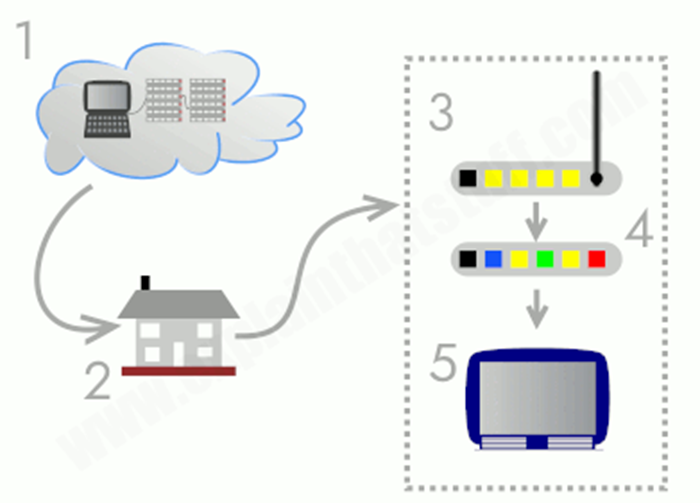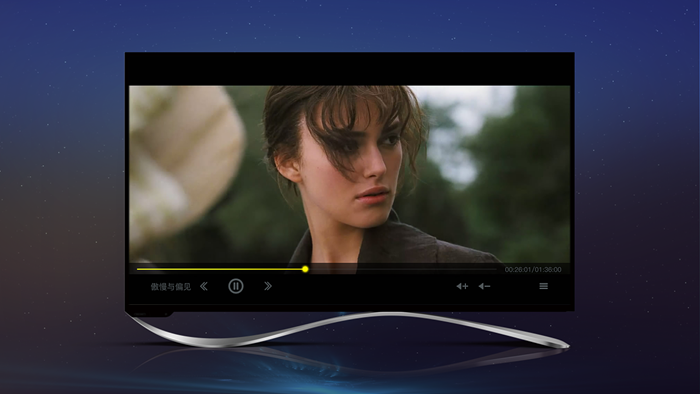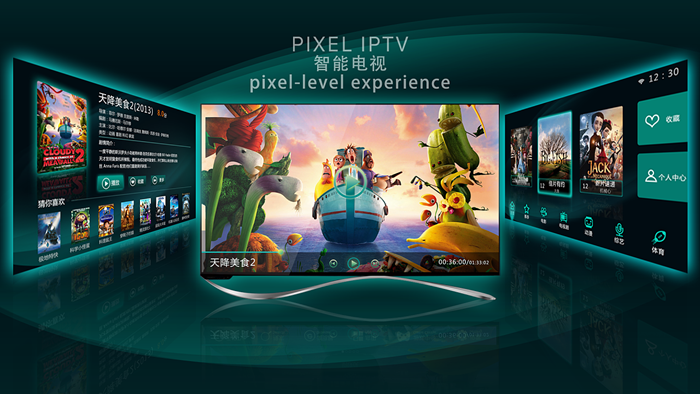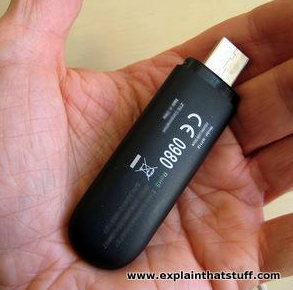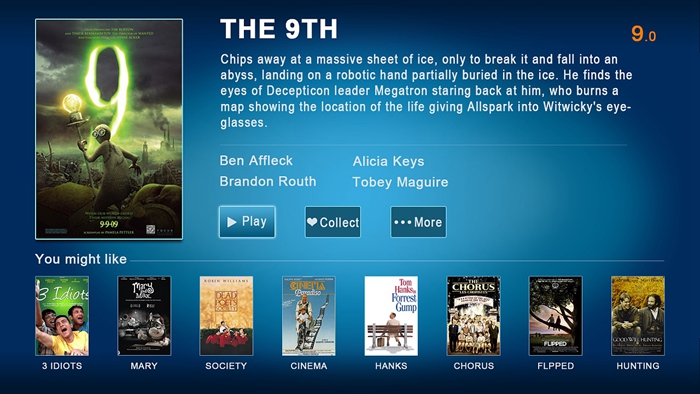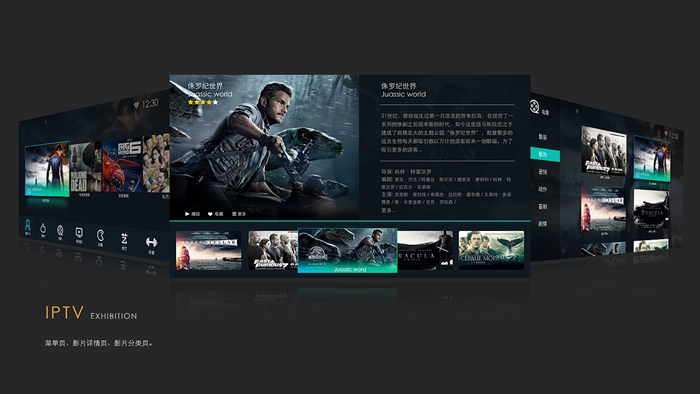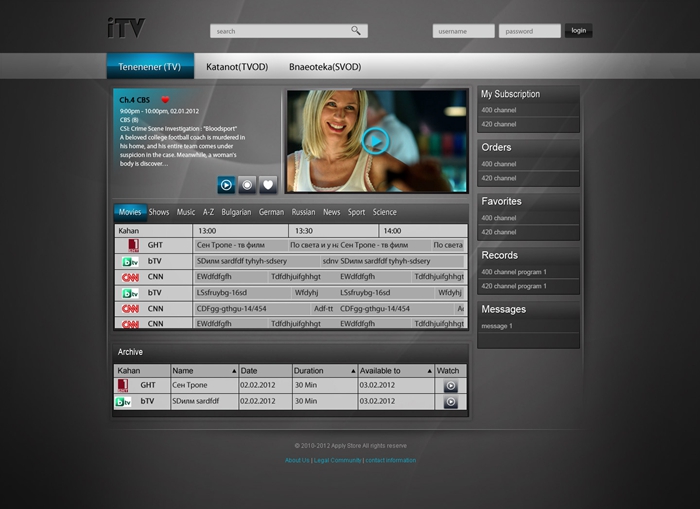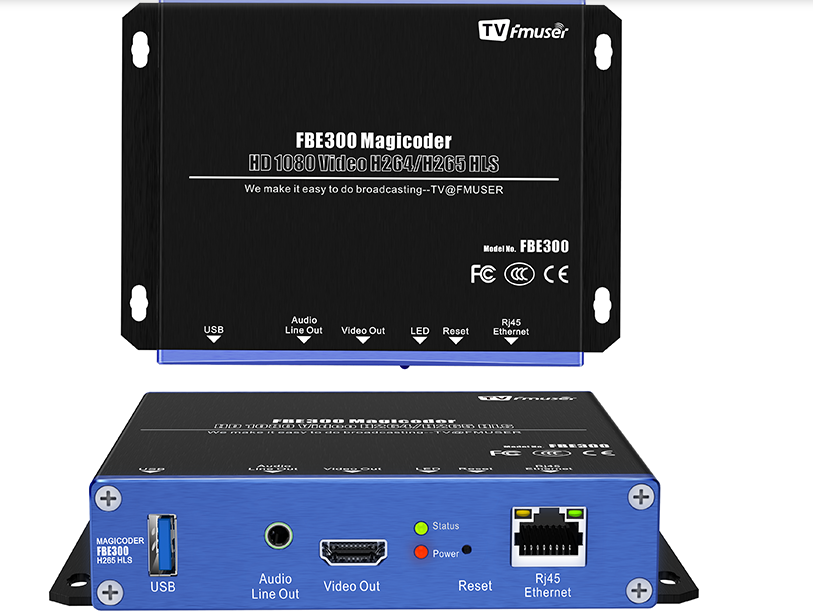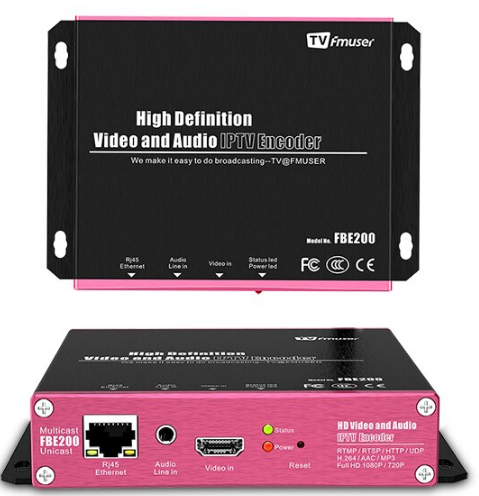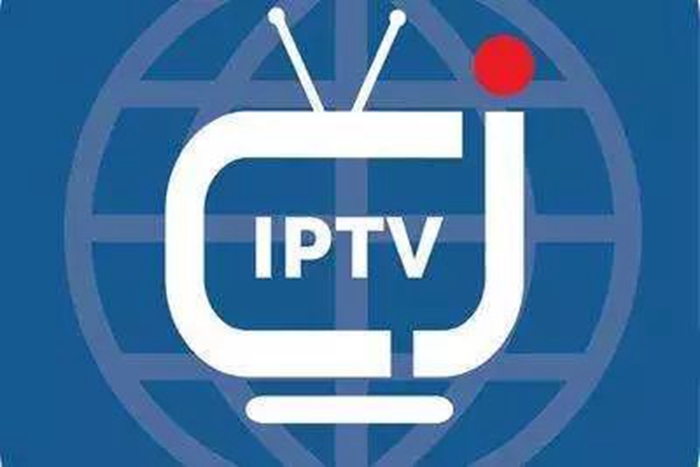
IPTV stands for “internet protocol television.” Check out this article that has everything you need to know about IPTV.And it’s likely that you’re going to be using it more in the future. IPTV is growing quickly, with new providers and services popping up alongside traditional TV providers with more IPTV offerings.
CONTENT
1. IPTV technology and development trend analysis
"With the development of technology, the current TV has been used not only as a display terminal for TV programs, but also as a display terminal for other services (such as games and stock quotations). Moreover, TV programs can not only be used on TV You can watch it on board, and you can also watch it on PCs, mobile phones and other devices."
IPTV is the use of IP to transmit TV programs, so it is sometimes called Internet TV. However, people from different industries, organizations, or knowledge backgrounds have different understandings of the meaning of IPTV.
The understanding of "TV" is mainly reflected in two aspects: one is that the program source of IPTV is the same as that of TV in the traditional sense; the other is that after processing by a set-top box (STB), the use of ordinary or high-definition television ( TV) as a display terminal. However, if these two conditions need to be met at the same time, or only the first condition needs to be met, it should be called IPTV, and there are different understandings and definitions.
With the development of technology, the current TV has been used not only as a display terminal for TV programs, but also as a display terminal for various other services (such as games and stock market quotations). Moreover, TV programs can already be watched not only on televisions, but also on devices such as PCs and mobile phones. Therefore, the "TV" in IPTV should be defined with the content as "TV" as the core definition, which only means that the program source is TV, and it has nothing to do with whether the display terminal is a traditional TV. In addition, the "TV" in IPTV is no longer a "live" in the traditional sense.
Photo: Typical domestic IPTV setup. Internet (1) Connect to your home (2) in the usual way. In your home, your router (3) is linked to a set-top box (4), and the set-top box converts the IPTV signal into a format that can be processed by ordinary televisions (5). Other digital devices, such as smartphones and tablets, can access IPTV directly from the router.
There are three different styles of IPTV. The first one (which you may already be using) is called video on demand (VOD). Using services such as Netflix (online movie site), you can choose from a wide range of TV shows or movies you want to watch, pay for them, and watch them on the spot. Some of the more enterprising television broadcasters in the world are offering a different kind of IPTV. In the UK, the BBC (British Broadcasting Corporation) uses a web-based streaming video player called BBC iPlayer to play last week's show online. This type of service is sometimes called time-shifted IPTV because you are watching ordinary scheduled broadcasts at a convenient time. The third type of IPTV involves broadcasting live TV programs over the Internet while watching TV programs-so it is live IPTV or IP simulcast. All three forms of IPTV can work with your computer and a normal web browser or (for better quality) a set-top box and a normal digital TV. All three can be provided over the public Internet or through a hosted private network that works in basically the same way (for example, from your phone and Internet service provider to your home entirely through the provider's network).
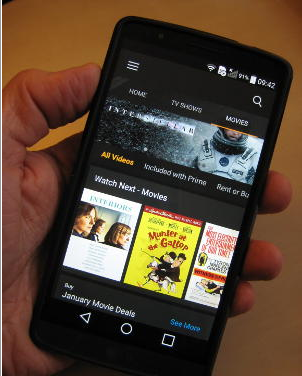
Photo: IPTV...no TV! Here, I am using Amazon's Instant Video (its answer to Netflix) to watch pay-as-you-go video on demand on a large high-definition smartphone (a "phablet" between a phone and a tablet).
The architecture of IPTV includes four main modules: super headend, video service bureau, local end bureau and user home.
(1) Super headend function
Super Headend Wing will download and store all the programs broadcasted on TV national channels every day.
The content of the program is then processed in such a way so that they can be transmitted over high-speed Internet links (such as DSL and FTTH links). For the distribution of IPTV channels, different multicast IP addresses are used.
The super headend floats the content to the video or data node from the local office end to the remote end through the multi-program transmission stream. The front-end obtains video from various sources and uses MPEG encoders and media streamers to transmit data content.
The front-end also provides content security through the use of conditional access systems (CAS) and digital rights management (DRM) systems.
(2) The role of the video service bureau
This will combine and store local content, video-on-demand and ad servers in it. It can also broadcast content through the use of wireless antennas and high-speed IP links to regional end offices.
(3) The role of the local office
The main component of the local end office is the DSLAM (Digital Subscriber Line Access Multiplexer), whose main task is to merge data and telephone services with IP video services.
Now the main function of the local end office is to combine all this information and distribute it to the user area by using a digital subscriber line (DSL) link or STM link. The DSL will also be used as a splitter because it will change the format of the content in a form that the end user can access and need.
(4) End of subscribers
This can be understood through examples. If the end user wants the content in a data format, a DSL modem is used to convert the IP data into a format compatible with a laptop or desktop computer. In order to extract video content, it is deployed to make it compatible with the STB (Set Top Box) used on the TV.
Since the video server network will utilize huge bandwidth to store and play stored and on-demand videos to make full use of the bandwidth deployed to these networks, two architectural models are proposed.
(1) Architecture model
The first is the centralized architecture model, in which all content is stored on a centralized server, which is a good solution for delivering small network series and small VOD content.
The other is a distributed architecture model, in which content is distributed among various nodes in the network, and unique bandwidth is allocated to it according to the requirements of the network.
The distributed architecture is a bit complicated, but it can effectively deliver large amounts of content through large networks used with large service providers.
(2) Bandwidth requirements
The IPTV bandwidth requirement of the access link is 4 MBPS per channel for SDTV and 20 MBPS per channel for HDTV. For VOD, the bandwidth requirement for HD video quality is 25 MBPS
1.3 What does IPTV provide?
The IPTV channel supports video resolutions up to 4K and 8-channel sound, as well as video subtitles and multiple audio tracks. They also enable viewers to time-shift live broadcasts of their favorite TV shows.
IPTV is interactive television. Viewers can watch movies and TV shows in live mode, or record them for later viewing. Compared with traditional analog or digital broadcasting, IPTV provides higher quality content and has lower subscription costs than satellite TV. IPTV services are provided by Internet service providers. Subscribers only need to choose the channel package they want and pay the provider's fee.
When using traditional TV, programs are broadcast by converting them into radio waves and transmitting them through the air to the rooftop antenna in your home. The antenna waves are converted back to electronic signals and your TV decodes the sounds and images they make (satellite TV works the same way, except that the signal bounces back into space and back, while cable TV sends the signal directly to your home without radio waves) . How is IPTV different?
(1) Stored program
Live programs are streamed during production, but pre-recorded programs and movies need to be stored in a way that can be selected and streamed on demand. Some VOD services limit the number of programs they provide not because they lack storage space, but because it is a way to limit the overall bandwidth of their service and its impact on the Internet. (For example, if the BBC makes every show it produces on iPlayer available for free, then a large part of the entire UK internet bandwidth will be used for streaming TV soap operas and sitcoms, which may slow down internet speed for all other types Network traffic.
(2) Preparation procedures
First, the TV program (pre-recorded or captured on-site with a camera) must be converted into a digital format, which can be transmitted as data packets using the Internet protocol. Sometimes the original program is already in a digital format; sometimes it takes the form of a standard analog TV image (called SD format) and requires additional processing (analog-to-digital conversion) to convert it into a digital format. Due to current bandwidth limitations, videos also need to be compressed (made into smaller files) so that they can be streamed smoothly without buffering (periodical delays due to the receiver establishing incoming packets). In practice, this means that the program is encoded in MPEG2 or MPEG4 format (MPEG4 is a newer form of video compression that provides higher quality at a similar bandwidth and only requires half the bandwidth to carry SD pictures). After completion, the advertisement must be inserted and the information must be encrypted.
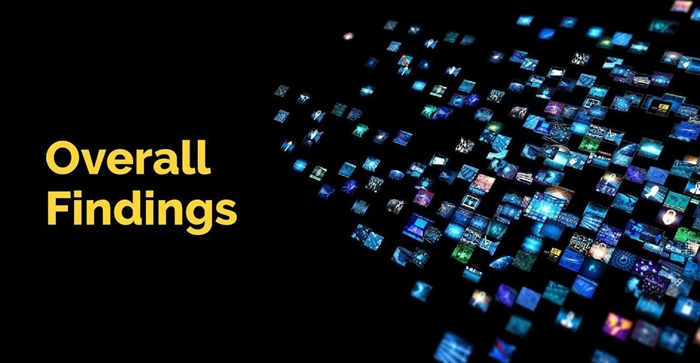
(3) Streaming media programs
When you browse a website, you actually establish a temporary link between two computers, so that one computer can "suck" information from the other computer. Your computer (client) obtains information from another computer (server) that is usually more powerful by directly linking to the IP address corresponding to the website you want to view. The client and server have a short, intermittent conversation, where the client requests from the server all the files needed to build the page you are viewing. Servers are usually so fast and powerful that many clients can download at the same time in this way with almost no delay. This kind of common download between a client server and a server is called IP unicast (most web browsing falls into this category).
(4) IP multicast
However, when it comes to streaming (playing the program while downloading the program), the client places a larger (simultaneous) load on the server, which may cause unacceptable delays and buffering. Therefore, for streaming media, a different download method is used, called IP multicast, in which each data packet leaves the server only once, but is sent to many different destinations at the same time; in theory, this means one server You can send information to multiple clients as easily as a single client. Therefore, if you have 1,000 people watching the World Cup finals via the Internet at the same time, they will receive streaming video packets from a single server, and these packets will be sent to 1,000 clients simultaneously using IP multicast. If the same TV provider provides an episode of "Friends" at the same time, and some of the first 1,000 people decide to "switch channels" to watch it, then they actually switch from one IP multicast group to another and start receiving Different video streams.
(5) The global nature of the Internet makes it difficult to send information from your server to a local client as reliably as a client on the other side of the globe. This is why IPTV providers often use a synchronized global network on the server, called a content delivery network (CDN), which keeps a "mirrored" copy of the same data; then people in the United States might stream from Mountain View, California Transmission programs, and people in Europe may get programs from Frankfurt, Germany.
(6) IPTV protocol
When you are streaming a program, you will not download it like a normal file. Instead, you are downloading a part of a file, playing it, and downloading the next part of the file while it is playing, ready to play in a minute or two. None of the files are stored for a long time. Streaming works because both your computer (the client) and the computer it receives data from (the server) agree to do such a thing. The Internet has successfully connected almost all computers in the world because they all agree to talk to each other in the same way using pre-arranged technical programs called protocols. Unlike downloading using common, standard, Web-based protocols (technical Above, they are called HTTP and FTP), streaming media involves the use of protocols suitable for simultaneous download and playback, such as RTP (Real Time Protocol) and RTSP (Real Time Streaming Protocol). Multicast streaming involves the use of IGMP (IP Group Management Protocol; you will occasionally see books and web pages replacing M with "membership"), which allows a server to broadcast to members of a group of clients (in fact, many people are in Watch) the same TV channel).
(7) Managed network
Providing IPTV on the public Internet is very different from providing IPTV through private, managed networks. This is what many IPTV providers ultimately choose to do: by controlling the entire network, they can guarantee a certain level of quality and service. In practice, this means having a highly organized, hierarchical network, in which there is a national office called the Super Front End (SHE, where programs are stored and the entire service is coordinated), which is called the Video Central Office (VHO) The regional center feeds, in turn, provide services for local distribution offices connected to individual home set-top boxes.
(8) Watch the show
Everyone with a computer and broadband Internet connection can watch IPTV, but most of us don’t want to watch TV on a crude laptop screen. This is why the future of IPTV is likely to allow viewers to buy set-top boxes (sometimes called STBs) that receive input from your Internet connection (via Ethernet cable or Wi-Fi), decode the signal, and display pictures on your computer. High-definition, widescreen TV. STB is an effective stand-alone computer, programmed to do only one thing: receive streaming video packets, decrypt them, convert them back to video files (MPEG2, MPEG4, or whatever format they originally adopted), and then display them as High-quality TV pictures. Apple TV works extensively in this way, using a set-top box to run simple applications on a streamlined operating system (tvOS) that manages the process of streaming video over the Internet.
Photo: Typical dongle. It turns your existing TV into a streaming media device and connects it to the Internet via Wi-Fi and HDMI.
As a simple, more compact, and more concealed alternative to set-top boxes, you can use a so-called dongle, which looks a bit like a USB flash memory stick, but allows secure access to Internet TV programs. The dongle is plugged into the HDMI (high-speed, high-definition digital video) socket on the TV and connected to the Internet via Wi-Fi to directly stream TV shows, movies, and music. Some dongles are completely self-sufficient: Roku and Amazon Fire work in this way without the aid of a computer or mobile device. Google’s Chromecast is a bit different: Generally, you can run it with your computer, tablet, or smartphone (actually becoming a remote control), and then it will stream your movies or TV shows directly from the Internet .
What is the difference between a set-top box and a dongle? It's as simple as that: The set-top box system is a larger box that contains a faster processor and more memory, so it can provide higher quality video output; this makes it more suitable for high-performance games, etc. Some companies, such as Amazon and Roku, offer a choice of simple, relatively expensive dongle or more expensive, higher specification set-top boxes.
1.5 The benefits of developing IPTV
(1) The benefits of IPTV to content
The development of IPTV can promote the prosperity of content provision. The IPTV industry chain is an open model, which is very attractive to content providers. Content providers can expand their content distribution channels through broadband platforms and increase the expression and means of content. Invigorate the content inventory, so that the idle programs that have been screened before can be reused in the form of retrieval and on-demand, and the reuse rate of programs can be improved. At present, broadband content is gradually enriched, and multimedia content such as online games and Flash is in the ascendant. Providers of these content can also transplant their program content into IPTV. With the gradual maturity of IPTV, it is bound to drive the huge development of the content market and at the same time bring huge economic benefits to content providers.
(2) The benefits of developing IPTV to business operations
In terms of business operations, IPTV is different from traditional telecommunications services. It is a triple play business. While maintaining communication and Internet entertainment capabilities, it also emphasizes TV terminals. This is the inheritance of traditional cultural consumption habits. Behind this inheritance is the huge user base of nearly 100 million families and the consumer psychology and consumption habits of the first choice for amateur entertainment. Therefore, IPTV services have the potential to become basic broadband services and are accepted by consumers. At present, the number of TV users in my country exceeds 300 million. If TVs are converted into network terminals, even if only 20% of TVs are successfully converted, there will be a conversion potential of 60 million, which will undoubtedly bring huge profits to service operators.
(3) The benefits of IPTV to consumers
IPTV is a new application of broadband video. It will drive the rapid development of broadband applications. People can not only get better services than traditional telecommunications services on broadband networks, they can browse the Internet, play games, and watch movies and TV programs they want to watch. IPTV expands broadband users from Internet users to non-Internet users, and expands the broadband entertainment market from more than 22 million broadband users and 87 million Internet users to more than one billion TV viewers. IPTV will fundamentally change the way people live and entertain.
(4) The benefits of IPTV to related industries
IPTV business has brought a more detailed division of labor to the industry, forming a complete industrial chain from content production management, business portfolio distribution, to final consumption. The purpose of developing IPTV is to promote the healthy and sound development of the industrial chain, encourage enterprises in various fields to actively participate, encourage normal competition and cooperation between enterprises, promote industrial development, reduce costs, drive consumer demand, and form healthy and orderly IPTV consumption environment. It will bring huge market potential to all links of the industrial chain. At the same time, because IPTV uses IP technology to carry TV services, it can provide a more personalized and interactive experience and experience than traditional TV on the basis of inheritance, which enables IPTV to avoid homogeneous competition with traditional TV and provide differentiated services. , Form the basis of healthy development.
(5) The benefits of IPTV to society
IPTV is a new thing. In the development process, in addition to its economic benefits, we must also consider the social benefits it can bring. The content of IPTV broadcasts has strong ideological characteristics. Therefore, the development of IPTV is conducive to cultural dissemination, improves the quality of people's mass entertainment content, and satisfies the interests of consumers while safeguarding national interests, and provides cultural guarantee for the creation of a harmonious society. . Therefore, it can be said that IPTV is a business that can be profitable and can spread advanced culture. The development of IPTV business has expanded the scope of network access to the public, and many traditional industries can be moved to the network to make remote medical treatment and remote teaching possible. It promotes the development of government online e-government affairs, and greatly reduces the digital divide between urban and rural areas, between the east and west, and between developed and underdeveloped regions. Promote the process of information civilization of the entire society.
①Program (content) source
can be the production unit of various content sources, such as television media, film and television production companies, news media organizations, distance education institutions, game manufacturers, etc.
②Business platform
Continue to edit and integrate content and provide users with a platform for IPTV services. The work of this platform includes content coding, arrangement, storage, distribution and management.
③Content distribution network
is responsible for passing IPTV information from the service platform to the user end. This part of the work can be subdivided into two parts: "content-independent" and "content-related". The "content-independent" part includes backbone/metropolitan area networks, broadband access networks, etc. The content-related part includes content distribution network (CDN), peer-to-peer (P2P) technology, etc.
④Client
The main function of the client device is: receiving (may also include sending user requests) and processing (may also include storage functions) media streams, and presenting the media streams to users. The media receiving and processing equipment can be independent of the presentation equipment, such as a set-top box (STP) with IP access function and a TV.
1.6 Telecommunications and IPTV
Judging from the current development trend, the internal technical factors and external demand factors for the development of the IPTV market have basically matured. In 2005, IPTV is bound to usher in a more rapid development trend.
In this situation, several major telecom operators and manufacturers have moved in response to the times and started commercial practices. China’s two major fixed-line operators, China Netcom and China Telecom, have started their own operations (especially with traditional TV content providers). Cooperation) some operational practices. At the same time, a large number of traditional telecommunications equipment manufacturers, such as Huawei, ZTE, UT, Shanghai Bell, etc. have also invested a lot of manpower and material resources in the development of IPTV products, and have also put forward their own unique overall technical solutions, which has prospered the market. , Has promoted the maturity of IPTV technology.
The successful practice of telecom operators in the IPTV market has proven their indispensable position and role in the entire industrial value chain. While expanding their business platforms and extending existing cooperation, telecom operators are also actively exploring how to use their own broadband advantages to provide users with more and more complete services to the maximum. In summary, traditional telecom operators have their own unique advantages in developing IPTV services:
(1) Broadband IP networks have been developed for a long time, and the maturity of the bearer network is a necessary condition for the realization of IPTV services. The IP network naturally supports point-to-point transmission, the so-called interactivity, so it can provide richness with minor changes (such as opening support for multicast, although almost all router devices in the existing telecommunications network already support) Interactive business.
(2) Telecom networks, including IP networks, have always advocated the "full network, whole network" strategy, which can enable users from all over the world to truly realize "one-point access, full network access". It is relatively easy to implement IPTV technology on such a network.
(3) Telecom operators have accumulated many years of business operation experience, including network storage, access authentication, bandwidth management, billing settlement, and user management technologies. These experiences can also be used in the operation of IPTV services. Video coding technology is also constantly developing. Now, images transmitted using MPEG-4 and H.264 encoding can meet the quality requirements of DVD when the bandwidth is 800kbit/S, thus greatly improving the service on the limited bandwidth. Quality of service. The rapid development of related network technologies, such as application layer quality control technology, CDN/VDN technology, and mature technology of controllable multicast, have paved the way for improving the quality of user services to varying degrees.
In 2004, the sales revenue of China's information industry exceeded two trillion yuan. The information industry has become the first pillar industry of China's economy and the main force driving the growth of the country's industry. As my country's basic, leading, and pillar industry, the telecommunications industry is related to many issues in my country's national security, social informatization and other aspects, and is related to the sound operation of the entire social order. At the just-concluded "two sessions", the "three rural" issues have received extensive attention from representatives. The "Village-to-village" project organized by the Ministry of Information Industry is being implemented, and agricultural informatization has a huge impact on solving the "three rural" issues. Therefore, the delegates advocated communication services for "agriculture, rural areas and farmers", so that communication can play an important role in solving the problems of distance education, cooperative medical care, and cultural propaganda in rural areas.
In recent years, the global telecommunications industry has fallen into a downturn. An important reason is that with the rapid decline in revenue from the dominant telephone business, although the data business has grown rapidly, it can be said that no new business growth points have been found. Under this situation, the practice of operators and other information industry-related enterprises in the field of IPTV is looking for new business growth points and conforms to the development trend of the integration of the three networks, which is helpful to the development of the communication culture industry and the prosperity of socialism. The information service market is of great significance. However, IPTV is still an emerging field after all, and it may still face some problems in practice:
(1) In terms of the industrial chain, there are problems such as unclear structure, unclear responsibilities and regulatory powers of content operators, weak power in most links, and problems to be run in between various links.
(2) In terms of operation, there are problems such as unclear operation model, unclear operation subject, weak operation network capability, insufficient content, lack of operation power, and unclear tariff policy.
(3) In terms of technology and standards, there are obstacles such as inconsistent coding and decoding standards, difficulty in guaranteeing quality of service (QoS), and difficulties in inter-system interconnection.
(4) In terms of policies, there are multiple supervision, unclear market access policies, transmission safety supervision, equipment access to the network, and consumer rights protection issues.
Therefore, the development of IPTV must first eliminate and work hard to overcome various obstacles, strengthen the concept of competition and cooperation, vigorously strengthen the cooperation of advantages in all aspects of society, improve the industrial chain, create new business models, prosper the entire IPTV market, and provide users with more More choices and better services can meet the people's growing material and cultural needs and build a harmonious society. For more content, please see What is IPTV, IPTV Industry Information, IPTV Technology and Solutions, or enter the discussion group to discuss.
2. Regarding the legality of IPTV and how to judge
Now that we have a basic understanding of what IPTV is, the biggest question is whether IPTV is legal.
This is. At least at some point.
As long as the streaming service is willing to pay enough money, then they will eventually get the copyright to your favorite TV show.
However, if they cannot reach an agreement, the rights expire, or the content owner would rather put it on their own streaming service (such as HBO Max or Disney+), then you may be out of luck.
Then sometimes you end up with the infamous 2013 deal, because of a contract dispute with Time Warner Cable (Spectrum), Dodgers fans living in Southern California cannot watch their team's games.
If someone can’t find a way to watch the content they want, they may start to consider alternative IPTV options that may not be completely legal.
Unfortunately, it is often difficult to judge whether streaming services are upright. Without checking the company's license agreement, how do you know if they are allowed to broadcast?
These companies have good reasons to hide when they break the law, and you might think that revealing the truth is not your job. However, law enforcement agencies and Internet providers have begun to crack down on the illegal use of IPTV.
Fortunately, determining whether an IPTV service is legal may be easier than you think.
2.2 Which live TV services are legal?
You may already know some of the most popular IPTV services. Some of them are even owned by big names in the telecommunications industry.
We have already mentioned Pluto TV, which can be used on many streaming media devices and does not require configuration.
Xumo is similar, providing live TV and video-on-demand. It is owned by telecommunications giant Comcast. This means you don't have to worry about legality or how long the service will last.
BBC’s iPlayer includes BBC One, BBC Two, BBC Three, BBC Four, BBC News Channel and CBeebies Channel. If you live outside the UK, you are restricted, but many people solve this problem by using a VPN like IPVanish.
Even YouTube offers its own live broadcast options, including channels such as HGTV, TNT, and Nickelodeon. However, it is not free.
Whether you like British dramas, anime, Disney movies, sports or manga movies, you will definitely find an IPTV service that suits your style.
In fact, many streaming services now offer optional packages to access niche and real-time content. This means you don't have to register for a separate service.
Many services provide some free content to attract consumers. If you directly view services from channels such as CBS or The CW, you will find apps that offer a mix of free and paid content.
Recommending other IPTV services is a bit difficult because new services are constantly emerging. Others went bankrupt because they encountered problems with the law, suppliers, or advertising buyers.
2.3 How to judge whether IPTV is illegal
Since there may not be an easy way to determine whether an IPTV service is legal, you must look for some obvious signs. These include:
(1) Free service
(2) IPTV service with a one-time charge instead of a monthly charge
(3) Promise to provide an IPTV box full of TV experience without having to explain how this is achieved.
(4) Poorly designed software
Of course, this does not mean that all TV boxes are illegal, and even offer IPTV options.
For example, some boxes are only pre-installed with legal software, so all you need to do when streaming, watching IPTV, or enjoying the media you already have is plug and play.
3.Start your own IPTV service – IPTV provider
If you are interested in starting your own IPTV service, the best way is to contact one of these service providers. They have the bandwidth, server capacity and distribution channels you need.
All you need to do is register, choose a plan, and start uploading your content. What kind of content? Who will watch? How will you make money? All of this depends on you.
There are IPTV channels for learning magic, fitness, dancing, watching movies, and almost anything else you can think of. If you have something you want to share with the world, you can use IPTV to achieve it.
Of course, you still need to record all these things. This requires a lot of work. However, once you do this, these services will allow you to easily promote and distribute your TV shows, online video content or movies.
It’s like building your own version of Netflix for you and your subscribers.
If you have a strong interest in our IPTV after reading this article, then you can learn about these products.
(1)FMUSER FBE300 Video Streaming Magicoder IPTV Transcoder
Some of the functions mentioned in this manual are only applicable to the corresponding models, not all listed models, so this manual cannot be used as a commitment for all functions of all models.
As an encoder, the FBE300 can encode video files into IP video streams and push them to the network for use in public digital signage.
As a decoder, the FBE300 can decode IP video streams into HDMI HD video for display and online video playback, also can be a set-top box for use with a TV.
As a transcoder, the FBE300 can converts IP video streams to other formats/protocols/resolutions and re-streams the converted IP video stream to the network. Widely used in TV operators, telecom operators, system integration, can greatly reduce the cost of system replacement.
As a player, the FBE300 can play video files from HDMI output in HD or on digital display ads.
The FBE300 can also be dual-stream mixed input for simultaneous display of large and small screens for distance education, telemedicine, program commentary and more.
FBE300 can also be used for program recording and storage. It downloads and stores IP video streams and is widely used in program recording, monitoring and playback, and personal network video downloading.
FBE300 is the only small device on the market that integrates encoding, transcoding, decoding, playing, storing and mixing. Due to its compact size, economical price and complete functions, FBE300 is very suitable for system integrators and individuals and provide a high quality video streaming experience for all users.
We can see that its cost performance is particularly high.
(2)FMUSER H.264 High Definition HD IPTV Streaming Encoder -FBE200-H.264-LAN
Mainly used in: digital TV broadcasting system-RJ45 digital TV program transmission, hotel TV system, digital TV branch network, front-end system, CATV broadcasting system-digital TV backbone network, edge side-IPTV and OTT front-end system, digital signage , Video conferencing, replacement of high-definition video capture card, hotel TV system, streaming media live broadcast, teaching/campus broadcasting, recording system, NVR, network video recorder
Is the price/performance ratio of this machine very high?
Of course, our company has other products. Welcome to visit https://fmuser.org/ to learn more about our products!
Welcome to share this post if it is helpful to you!
If you would like to build an IPTV system or buy any IPTV equipment, please feel free to contact us.
Question & Answer
How does paid IPTV work?
IPTV is the transmission of TV content over the Internet Protocol (IP) network. It uses your Internet Service Provider (ISP) infrastructure to deliver content as a real-time feed or on-demand. To use IPTV services, you need a broadband Internet connection and a device for viewing IPTV content on a desktop computer, laptop, smart phone, or smart TV device.
Do I need to buy a new TV or an old TV?
You can also easily get IPTV on older TV models, but you need a set-top box. The set-top box decodes the digital signal and displays the resulting image on your TV screen. You can connect the set-top box to the TV using an HDMI or composite video cable.
Which set-top box is most suitable for this situation?
A set-top box powered by Linux, Android, Windows or any other platform is very suitable for IPTV. However, the most feature-rich one is the Android TV box, including Infomir's MAG425A. This particular device can play 4K content, supports voice search, and can access Google services and the Google Play store. Certified by Google, it sells well in the United States and Europe.
What internet speed does IPTV need?
Usually, the provider will specify the connection speed required for non-disruptive service. If you want to avoid the frustration caused by stuttering and freezing of video playback, you need to meet this requirement. Usually, 5 Mbit/s is enough to watch SD video content. For high-definition video, at least 10 Mbit/s is required.
At low connection speeds, you'd better choose a lower video quality or start playing after the video is cached. Also keep in mind that apps running in the background and other devices connected to your Wi-Fi may also affect the experience.
How to connect?
Study the solutions provided by local IPTV operators, choose the most suitable solution for you, and then place an order. After the provider assigns the IP line, you need to connect it to the router. The next thing to do is to connect the set-top box to the router (via an Ethernet cable or Wi-Fi). Then connect the set-top box to the TV and set it up.
Finally, you need to activate your subscription and get a downloadable playlist or dedicated IPTV application from your provider.
Welcome to share this post if it is helpful to you!
Cellphone: +8615915959450
WhatsApp: +8615915959450
WeChat: +8615915959450
QQ: 727926717
Do you want to know other knowledge about IPTV? Please click on the link below.I hope they can help you.
1.What are the advantages of the iptv TV system?
2.Design and application considerations of iptv set-top boxes.
3.iptv solution product series parameter requirements.



|
|
|
|
How far(long) the transmitter cover?
The transmission range depends on many factors. The true distance is based on the antenna installing height , antenna gain, using environment like building and other obstructions , sensitivity of the receiver, antenna of the receiver . Installing antenna more high and using in the countryside , the distance will much more far.
EXAMPLE 5W FM Transmitter use in the city and hometown:
I have a USA customer use 5W fm transmitter with GP antenna in his hometown ,and he test it with a car, it cover 10km(6.21mile).
I test the 5W fm transmitter with GP antenna in my hometown ,it cover about 2km(1.24mile).
I test the 5W fm transmitter with GP antenna in Guangzhou city ,it cover about only 300meter(984ft).
Below are the approximate range of different power FM Transmitters. ( The range is diameter )
0.1W ~ 5W FM Transmitter :100M ~1KM
5W ~15W FM Ttransmitter : 1KM ~ 3KM
15W ~ 80W FM Transmitter : 3KM ~10KM
80W ~500W FM Transmitter : 10KM ~30KM
500W ~1000W FM Transmitter : 30KM ~ 50KM
1KW ~ 2KW FM Transmitter : 50KM ~100KM
2KW ~5KW FM Transmitter : 100KM ~150KM
5KW ~10KW FM Transmitter : 150KM ~200KM
How to contact us for the transmitter?
Call me +8618078869184 OR
whatsapp:+86 18319244009
Email me [email protected]
1.How far you want to cover in diameter ?
2.How tall of you tower ?
3.Where are you from ?
And we will give you more professional advice.
About Us
FMUSER.ORG is a system integration company focusing on RF wireless transmission / studio video audio equipment / streaming and data processing .We are providing everything from advice and consultancy through rack integration to installation, commissioning and training.
We offer FM Transmitter, Analog TV Transmitter, Digital TV transmitter, VHF UHF Transmitter, Antennas, Coaxial Cable Connectors, STL, On Air Processing, Broadcast Products for the Studio, RF Signal Monitoring, RDS Encoders, Audio Processors and Remote Site Control Units, IPTV Products, Video / Audio Encoder / Decoder, designed to meet the needs of both large international broadcast networks and small private stations alike.
Our solution has FM Radio Station / Analog TV Station / Digital TV Station / Audio Video Studio Equipment / Studio Transmitter Link / Transmitter Telemetry System / Hotel TV System / IPTV Live Broadcasting / Streaming Live Broadcast / Video Conference / CATV Broadcasting system.
We are using advanced technology products for all the systems, because we know the high reliability and high performance are so important for the system and solution . At the same time we also have to make sure our products system with a very reasonable price.
We have customers of public and commercial broadcasters, telecom operators and regulation authorities , and we also offer solution and products to many hundreds of smaller, local and community broadcasters .
FMUSER.ORG has been exporting more than 15 years and have clients all over the world. With 13 years experience in this field ,we have a professional team to solve customer's all kinds of problems. We dedicated in supplying the extremely reasonable pricing of professional products & services. Contact email : [email protected]
Our Factory

We have modernization of the factory . You are welcome to visit our factory when you come to China.

At present , there are already 1095 customers around the world visited our Guangzhou Tianhe office . If you come to China , you are welcome to visit us .
At Fair

This is our participation in 2012 Global Sources Hong Kong Electronics Fair . Customers from all over the world finally have a chance to get together.
Where is Fmuser ?

You can search this numbers " 23.127460034623816,113.33224654197693 " in google map , then you can find our fmuser office .
FMUSER Guangzhou office is in Tianhe District which is the center of the Canton . Very near to the Canton Fair , guangzhou railway station, xiaobei road and dashatou , only need 10 minutes if take TAXI . Welcome friends around the world to visit and negotiate .
Contact: Kerwin
Cellphone: +8618078869184
whatsapp:+86 18319244009
Wechat: +8618078869184
E-mail: [email protected]
Address: No.305 Room HuiLan Building No.273 Huanpu Road Guangzhou China Zip:510620
|
|
|
|
English: We accept all payments , such as PayPal, Credit Card, Western Union, Alipay, Money Bookers, T/T, LC, DP, DA, OA, Payoneer, If you have any question , please contact me [email protected] or
whatsapp:+86 18319244009
-
PayPal.  www.paypal.com www.paypal.com
We recommend you use Paypal to buy our items ,The Paypal is a secure way to buy on internet .
Every of our item list page bottom on top have a paypal logo to pay.
Credit Card.If you do not have paypal,but you have credit card,you also can click the Yellow PayPal button to pay with your credit card.
---------------------------------------------------------------------
But if you have not a credit card and not have a paypal account or difficult to got a paypal accout ,You can use the following:
Western Union.  www.westernunion.com www.westernunion.com
Pay by Western Union to me :
First name/Given name: Yingfeng
Last name/Surname/ Family name: Zhang
Full name: Yingfeng Zhang
Country: China
City: Guangzhou
|
---------------------------------------------------------------------
T/T . Pay by T/T (wire transfer/ Telegraphic Transfer/ Bank Transfer)
First BANK INFORMATION (COMPANY ACCOUNT):
SWIFT BIC: BKCHHKHHXXX
Bank name: BANK OF CHINA (HONG KONG) LIMITED, HONG KONG
Bank Address: BANK OF CHINA TOWER, 1 GARDEN ROAD, CENTRAL, HONG KONG
BANK CODE: 012
Account Name : FMUSER INTERNATIONAL GROUP LIMITED
Account NO. : 012-676-2-007855-0
---------------------------------------------------------------------
Second BANK INFORMATION (COMPANY ACCOUNT):
Beneficiary: Fmuser International Group Inc
Account Number: 44050158090900000337
Beneficiary's Bank: China Construction Bank Guangdong Branch
SWIFT Code: PCBCCNBJGDX
Address: NO.553 Tianhe Road, Guangzhou, Guangdong,Tianhe District, China
**Note: When you transfer money to our bank account, please DO NOT write anything in the remark area, otherwise we won't be able to receive the payment due to government policy on international trade business.
|
|
|
|
* It will be sent in 1-2 working days when payment clear.
* We will send it to your paypal address. If you want to change address, please send your correct address and phone number to my email [email protected]
* If the packages is below 2kg,we will be shipped via post airmail, it will take about 15-25days to your hand.
If the package is more than 2kg,we will ship via EMS , DHL , UPS, Fedex fast express delivery,it will take about 7~15days to your hand.
If the package more than 100kg , we will send via DHL or air freight. It will take about 3~7days to your hand.
All the packages are form China guangzhou.
* Package will be sent as a "gift" and declear as less as possible,buyer don't need to pay for "TAX".
* After ship, we will send you an E-mail and give you the tracking number.
|
|
|
For Warranty .
Contact US--->>Return the item to us--->>Receive and send another replace .
Please return to this address and write your paypal address,name,problem on note: |
|



